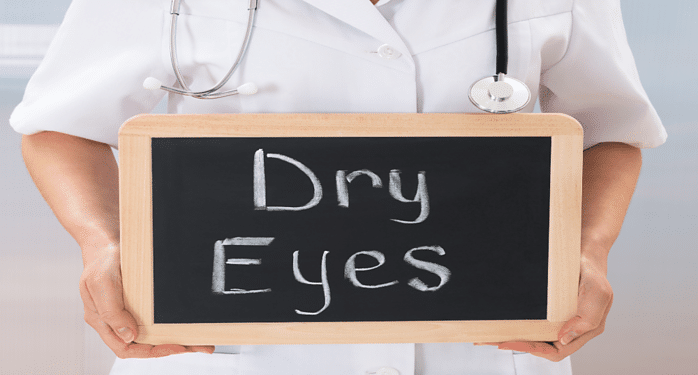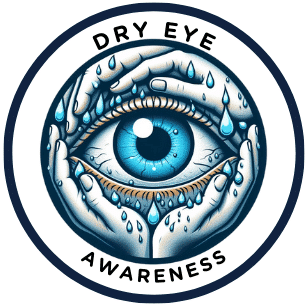
I’m going to break down a condition that’s common but often misunderstood: dry eye syndrome. If you’ve ever felt like your eyes are itchy, red, or like you simply can’t get enough moisture in them, you’re not alone. Dry eye syndrome affects a significant number of people, and it’s more than just a trivial annoyance. It can impact your daily life, making tasks like reading and driving uncomfortable or even challenging.
You might be wondering what exactly dry eye syndrome is. Simply put, it’s when your tears aren’t able to provide adequate lubrication for your eyes. This might be because your eyes don’t make enough tears, or the tears they do make aren’t doing their job right. And trust me, the symptoms can range from a burning sensation to blurred vision, both of which can be quite bothersome.
Now, why is it crucial to recognize the signs early on? Well, catching symptoms such as stinging or scratchiness early can help you address the issue before it gets worse or leads to more serious complications. Even if it seems minor at first, without proper attention, dry eye syndrome can escalate and affect your quality of life.
So now you have a basic understanding of dry eye syndrome. But you’re probably asking, ‘What causes it?’ That’s going to include a variety of factors, from your daily environment to your personal health habits. I’m here to help you understand how external environmental factors play a big part in dry eye, which I’ll cover in the next section.
External Environmental Factors Leading to Dry Eye

You might not think about it often, but the environment you’re in plays a huge role in the health of your eyes. For instance, if you live in a place with a lot of wind or a dry climate, you could be at a higher risk for dry eye syndrome. Wind can cause your tears to evaporate too quickly, and low humidity can make it hard for your eyes to stay moist on their own.
And let’s talk about screens. In this digital age, you’re probably spending a lot of time staring at one, whether it’s for work or play. The problem is, when you’re looking at a screen, you tend to blink less, which means your eyes aren’t getting the regular moisture they need. It’s important to take breaks, blink consciously, and maybe even adjust screen brightness to help prevent discomfort.
Then there’s air quality. When the air is full of smoke, dust, or chemical pollutants, it’s no surprise that your eyes might start to feel the strain. These irritants can lead to your eyes drying out much faster than they normally would. I’m going to address how your daily lifestyle choices and even your own health can inadvertently contribute to this condition in the next section.
Lifestyle and Health Conditions That Contribute to Dry Eye
You’re going to find out about various personal factors that are closely linked to dry eye syndrome. It’s not just environmental triggers that play a role; our habits and health conditions can significantly influence eye health.
Choose something that resonates with you when it comes to diet: your eyes will thank you. Adequate hydration is crucial — not just for your overall health, but for maintaining sufficient moisture in your eyes. Foods rich in omega-3 fatty acids, like fish and flax seeds, can also support good eye health.
Common medications, including antihistamines, decongestants, and some blood pressure drugs, often list dry eye as a potential side effect. If you notice changes in your eye comfort after starting a new medication, it might be time to discuss alternatives with your doctor.
Autoimmune diseases such as Sjogren’s syndrome and rheumatoid arthritis, as well as hormonal fluctuations during pregnancy or menopause, have been shown to impact tear production, leading to symptoms of dry eye. Your body’s internal changes are just as important as external factors when it comes to eye health.
Nearing the end of this section, remember your choices do matter. Whether it’s switching to glasses on long computer days or incorporating eye-friendly nutrients into your meals, small changes can make a big difference. And now, let’s turn to how you can proactively manage and treat dry eye syndrome with a blend of lifestyle tweaks and medical interventions.
Preventative Measures and Treatments for Dry Eye Syndrome
I’m here to help you with some strategies to prevent and treat dry eye syndrome. Remember, a proactive approach can make a big difference in your comfort and eye health.
Choose something that resonates with you when it comes to lifestyle changes. Simple things like taking frequent screen breaks and ensuring proper lighting can reduce eye strain. Staying hydrated and maintaining a diet rich in omega-3 fatty acids will also benefit your eyes.
You can always adjust your approach down the road with various medical treatments. Over-the-counter eye drops, or artificial tears, are a first-line therapy. Prescription medications that help your body produce more tears are another viable option.
In more severe cases, procedures like punctal plugs, which block the tear ducts and keep moisture on your eyes, might be the best course of action. Eyelid massages and warm compresses can also promote tear production and relieve symptoms.
You’re going to find out about advanced treatments if these initial steps don’t bring relief. Technologies such as intense pulsed light therapy and LipiFlow thermal pulsation may offer further help. A professional will guide you through the benefits and suitability of these options.
Your first attempt doesn’t need to be your last. In my opinion, collaborating closely with an eye care professional is crucial. They’ll tailor a treatment plan based on the specific causes and severity of your condition.
I really hope that you find this information useful in combating dry eye syndrome. A lot is happening very quickly in the field of eye health, so stay informed and proactive. Here’s to your clear and comfortable vision ahead!
